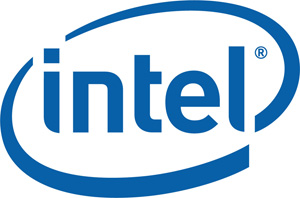 |
Applications to be used for wide range of research capabilities
Columbus, Ohio (June 29, 2011) – Ohio Supercomputer Center (OSC) officials have announced that an agreement has been reached with Intel Corporation to explore possibilities with the Intel® Many Integrated Core (Intel® MIC) Architecture for scientific computing workloads.
Many researchers rely on OSC resources and expertise to port their codes on research as far-reaching and diverse as predicting the paths of pandemic flu epidemics, analyzing new antidotes to lethal chemicals, creating new materials that fully harness solar energy power and studying the behavior of black holes.
Over the next six months, OSC staff and research partners will evaluate the capabilities of the Intel® MIC Architecture across five High Performance Computing (HPC) application classes – computational chemistry, climate and ocean modeling, high-energy physics, image processing and computational material sciences. The findings will be jointly presented by OSC and Intel at the Supercomputing Conference in November 2011.
Intel will also provide OSC with early access to the first commercial Intel MIC coprocessors (code-named "Knights Corner"), enabling OSC to ensure that workloads achieve maximum performance on these first Intel MIC coprocessors.
“We are excited to be an early evaluator of the Intel MIC Architecture since it promises to provide performance and power efficiency similar to GPU-based solutions on highly parallel workloads, but most importantly without the need for new programming models,” said David Hudak, Ph.D., program director for cyber infrastructure and software development at OSC.
“We see this as an important contribution in the research community and beyond since the same well-established software tools and techniques used for Intel® Xeon® processor-based systems can also be applied to the Intel MIC Architecture. Intel MIC Architecture can support existing parallel programming models like OpenMP, MPI and Intel® Threading Building Blocks, and we see real promise in Intel’s tool implementations. In addition, Intel's support for other parallel programming solutions such as Intel® Cilk Plus and Intel® Array Building Blocks provide a unique opportunity to expand parallel solutions.”
“As discussed at the International Supercomputing Conference last week, the path to exascale will not only take research in new technologies and architectures, but will also require a deep understanding of how to adapt applications to take advantage of these developments,” said Anthony Neal-Graves, vice president, Intel Architecture Group, and general manager, Many Integrated Core Computing, Intel. “OSC's work in studying applications for extreme parallelism on Intel® MIC Architecture will help us gain this understanding, and ultimately help make exascale computing both more achievable and more practical.”
The Ohio Supercomputer Center (OSC) provides a robust shared infrastructure and proven expertise in advanced modeling, simulation and analysis to its academic and industrial research communities. OSC empowers scientists with the vital resources essential to make extraordinary discoveries and innovations, partners with businesses and industry to leverage computational science as a competitive force in the global knowledge economy, and leads efforts to equip the workforce with the key technology skills required to secure 21st century jobs.
Through the Alliance for High Performance Digital Manufacturing and other research efforts, OSC and Intel have collaborated on solutions for “missing middle” computing, which represents 95% of all manufacturing in the United States, by reducing the barrier to entry for smaller organizations that need help accessing and mastering the tools of tomorrow’s innovative manufacturers and product designers.
“We look forward to working with Intel on these projects, as Intel® MIC Architecture provides the ability to leverage existing codes and scale from desktop to large-scale systems,” said Ashok Krishnamurthy, interim co-executive director of OSC. “This will enable researchers at universities and small and medium-sized companies to start modeling and simulation applications on local platforms and migrate to large-scale systems as the need arises.”
The Ohio Supercomputer Center (OSC) is a catalytic partner of Ohio universities and industries, providing a reliable high performance computing and high performance networking infrastructure for a diverse statewide/regional community including education, academic research, industry, and state government. Funded by the Ohio Board of Regents, OSC promotes and stimulates computational research and education in order to act as a key enabler for the state's aspirations in advanced technology, information systems, and advanced industries. For more, visit www.osc.edu.